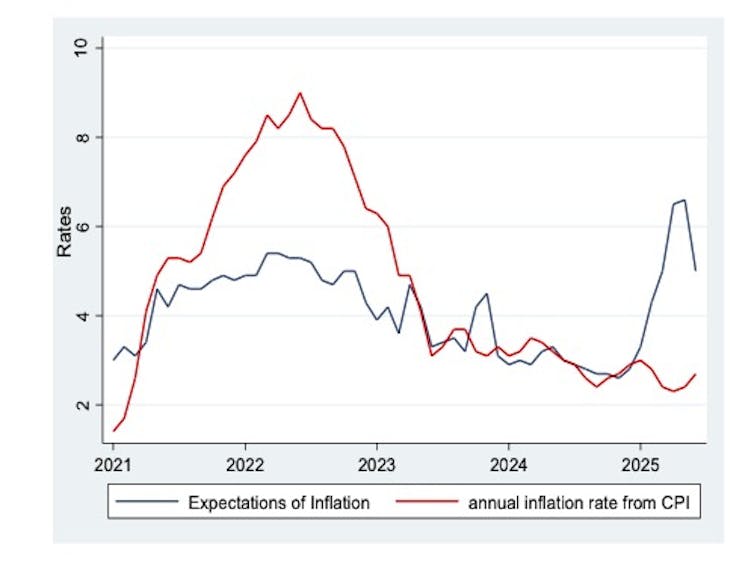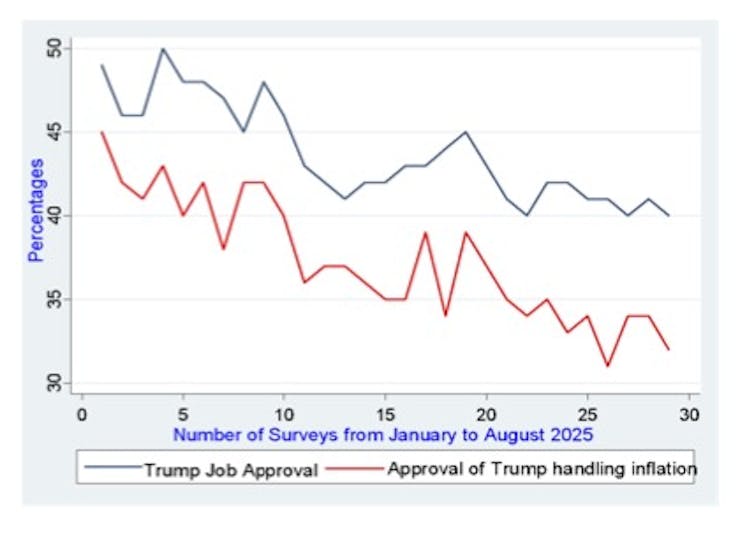Source: The Conversation – UK – By Robert Simmons, Professor of Economics, Lancaster University
The 2025 summer football transfer window was a record for the English Premier League with teams spending £3.9 billion on transfer fees for new players. That’s more than the top divisions of France, Germany, Italy and Spain combined.
The most expensive transfer was Alexander Isak’s drawn out switch from Newcastle United to Liverpool, who forked out £125 million for the forward and will also pay him a salary of around £13 million a year (plus bonuses).
So there is plenty of money being spent at the top end of English football. But it’s a very different story in the tiers below, where the likes of Morecambe FC and Sheffield Wednesday have spent the summer in crisis over financial issues.
In fact, all three divisions below the Premier League (Championship, League One and League Two) make a financial loss every year. The economic chasm between the teams at the top and those at the bottom is only getting wider and there is an ever-increasing chance that some clubs will soon become insolvent.
And though the economic strife affecting teams in the lower leagues might not seem like such a big problem for the Premier League giants and their fans – any fans of any team, in fact – it should be.
The four divisions (92 clubs) of English league football are linked every season by promotion and relegation. Such is the fluidity of this system that Brighton and Hove Albion and Bournemouth are now enjoying life in the Premier League having gradually clawed their way up from the fourth tier.
In the other direction, Luton Town has been relegated twice in the past two years from the Premier League to League One. The jeopardy attached to the hope and dread of going up or going down is part of what makes English football so captivating – and attractive to broadcasters and sponsors.
If clubs are weak financially, and unable to afford to develop or bring in fresh talent, the whole system risks becoming static. In recent years, even promoted sides struggle (all the teams promoted to the Premier League in the last two seasons have been immediately relegated again), often resulting in unappealing fixtures where weaker teams are thrashed by stronger ones. This kind of competitive imbalance could undermine the value of future broadcast rights fees.
Those fees are important part of the football economy, although again, it is the teams at the top of the tree which benefit the most.
Championship, League One and League Two clubs received negligible fee income from broadcast rights until recently, after a new broadcast deal with Sky TV started in 2024 which is worth £935 million over five years. (The current domestic Premier League deal is worth £6.7 billion over four years.)
Sharing is caring
So lower division clubs now have games accessible to viewers and a new income stream that should help offset financial losses. But the real financial win comes from getting as far up the football pyramid as possible
For the lower leagues then, promotion is always the biggest goal. The new celebrity-backed owners of Birmingham City and Wrexham have the explicit ambition of reaching the Premier League. The end of season playoff final between two Championship teams fighting for promotion to the Premier Leagues is estimated to be worth around £200 million, given the increased broadcast incomes that would follow.
For its part, the Premier League has often restated a commitment to keeping the 92-team hierarchical structure of English football intact, and currently supports teams in the lower leagues through a mechanism of “solidarity payments”.
As of the 2024-25 season, these payments were £5.5 million per club for Championship teams (apart from those relegated from EPL which receive much larger “parachute payments” instead), £1 million per club for League One and £0.75 million per club for League Two.
Nevertheless, many EFL clubs still rely on loans and capital injections, often by their owners, to get by. And the gap in economic power remains vast.
In 2023-24, Liverpool’s total revenue was £614 million while Morecambe’s was £4.57 million.
If the EPL is serious about sustaining the 92-team hierarchical structure in England then there is scope for dramatically increasing these solidarity payments – which could be made conditional on sound financial practices by receiving clubs. Like a wealth tax for football, more generous payments would essentially help to reduce economic inequality across English football as a whole, and make for a financially much healthier sport.
![]()
Robert Simmons does not work for, consult, own shares in or receive funding from any company or organisation that would benefit from this article, and has disclosed no relevant affiliations beyond their academic appointment.
– ref. Big-spending Premier League needs to spread more of its wealth to poorer clubs or everyone loses – https://theconversation.com/big-spending-premier-league-needs-to-spread-more-of-its-wealth-to-poorer-clubs-or-everyone-loses-263750












